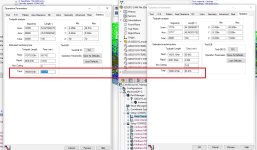Ok, ill explain, most people don't notice this, but once you've used Volumill a lot and look at other HSM software you see the difference.
First watch a video of say, Fusion360 doing a HSM roughing strategy, you will notice that the shape of the starting strategy is the shape of the outside geometry, So if you had a rectangle piece of material and was cutting a circular boss in the middle, it will start cutting in a rectangular shape around the part feeding its way inward in that retangular shape until it get close to the part, then it will start to widdle away at the left over material slowly getting smaller and smaller left over shapes. You will also notice that it machines at the same feed rate the entire time.
Now with Volumill this is reverse engineered, I don't know who was first, but it's backwards, Volumill with this same part will calculate the round boss, and create cut paths in that shape all the way out to the rectangular stock shape, so when it cuts it start by removing all the corners making its way inward each time, but in the shape of the inner geometry, the circle, not in the shape of the rectangle like others. but when it get close to the inner geometry all the cust are in the shape of the inner geometry so it doesnt leave small islands to be removed.
If you really think about it with this scenario Volumill will have more rapids on the out perimeter of the part, which are longer rapids, and the other HSM paths will have more rapids on the inner of the paths, so shorter rapids,
this alone would make Volumill slower than other HSM calculators, BUT
what Volumill also does is it adjusts feed rates as it gets into tighter areas, look at your GCode or just what the feed on your screen, it changes/lowers the feed rates drastically throughout a program.
Most others dont do this, they adjust the tool engagement to minimize, Volumill adjusts the feed rate speed.
Not only does this make Volumill drastically slower, which is why they added the feature of "minimum feed rate" but it is also incorrect physics when cutting steel, because in tight areas it will decrease the feed rate to below what is acceptable for the surface feed of that material, causing problems.


